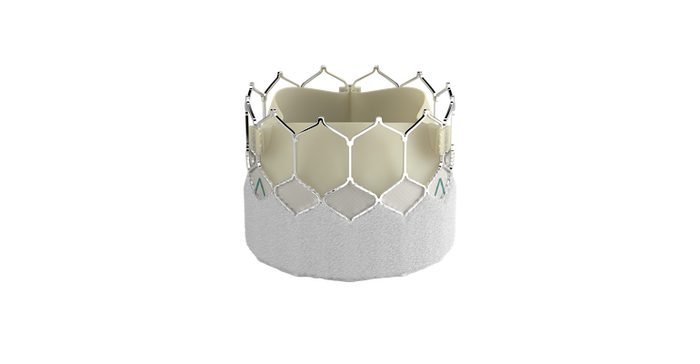Edwards Lifesciences management acknowledged some recently cancelled cases due to COVID-19 resurgence, but still offers confident outlook for the back half of the year.
July 26, 2020

Edwards Lifesciences blew past conservative analyst expectations in the second quarter and offered a confident outlook for the rest of the year, even as COVID-19 has forced some recent heart valve cases to be cancelled.
"Based on how we've begun Q3, we continue to expect sales in Q3 to be approximately flat to our pretty strong 2019 Q3 and the Q4 is going to transition to growth over 2019," said CEO Mike Mussallem, according to Seeking Alpha transcripts of the company's second-quarter earnings call.
Just how much growth the structural heart company might see by the end of the year remains to be seen, however. Bob Hopkins, a medtech analyst at Bank of America, mentioned that the Street is putting it in the ballpark of 8%, but Mussallem said the company "is not prepared to get that precise."
The fact that the company even provided guidance for the rest of the year can be taken as a positive sign, given that Edwards Lifesciences — like most of the medical device industry — had dropped its second-quarter guidance back in April.
"We think Q2 dynamics and trend bode well for [Edwards Lifesciences] in the back half of 2020, and more so exiting the COVID period," noted Cecelia Furlong, a medtech analyst at Canaccord Genuity. Based on the company's second-quarter earnings, Furlong raised her price target on Edwards' stock to $89 from $86.
Even with the upbeat outlook from Edwards Lifesciences, however, other analysts are still playing it safe, given ongoing COVID uncertainties.
"We keep our forecast relatively achievable as we remain cautious on Q3 dynamics for the entire medtech industry," noted Marie Thibault, a medtech analyst at BTIG and a former managing editor at MD+DI.
What COVID-driven TAVR backlog?
Some investors may have been surprised to hear Mussallem say that many centers that perform transcatheter aortic valve replacement (TAVR) procedures using Edwards Lifesciences' valves have already worked off their COVID-driven backlog. In fact, some centers operate with no backlogs at all, he said, explaining that when procedures stopped earlier in the year due to the pandemic, so did screening.
"We know of some centers outside the U.S. where the waiting lists have gotten longer, and they’re likely to get worked down over 2020," he said. "But in the U.S., we don’t think that there’s much of a backlog at this point. And unfortunately, due to the deadly nature of severe [aortic stenosis], some of these patients who delayed treatment may never be treated."
Analysts are also watching Edwards Lifesciences and other medtech companies closely to see if recent COVID-19 surges in U.S. hotspots have or will impact TAVR procedure volumes again.
"Yes, we have heard anecdotally of cases being canceled in places like Texas and Florida and some of the southern states," Mussallem said. "But then again, as we mentioned, we had a chance to sort of see how Q2 finished and see how Q3 started. And that’s kind of built into our guidance. We anticipated there were going to be some levels of ups and downs. And so when we project the Q3 that we think is approximately flat to 2019, it takes that into account."

The Sapien 3 Ultra valve (shown above) is the company's most advanced TAVR device. The valve, which FDA cleared in December 2018, features a heightened outer skirt designed to eliminate paravalvular leak. Also noteworthy, the device comes with a delivery system that introduced an "on balloon" design to the market, removing the need for valve alignment during the procedure.
Edwards Lifesciences didn't see many new TAVR centers in Q2
In previous years, companies like Edwards Lifesciences have touted new center growth as a key part of the TAVR market. That is one area where the pandemic has had more of an impact, it seems. Mussallem said new centers were not a big part of the second-quarter story and most of the TAVR procedures occurred at centers that were already set up to do them.
"We’ve had a chance to spend time with a number of hospital CEOs, and we’ve been impressed that they just set their mind to trying to make a pivot and be able to treat structural heart, in particular [aortic stenosis] patients, during this time," he said.
About the Author(s)
You May Also Like




